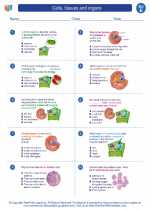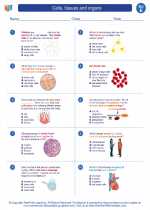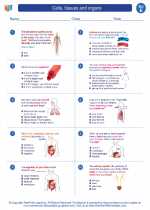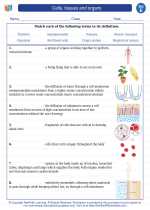Rock Study Guide
What is a Rock?
A rock is a solid, natural material made up of one or more minerals. Rocks are found in the Earth's crust and are formed through various geological processes.
Types of Rocks
There are three main types of rocks:
- Igneous Rocks: Formed from the cooling and solidification of molten rock (magma or lava). Examples include granite, basalt, and obsidian.
- Sedimentary Rocks: Formed from the accumulation and compaction of sediments, such as sand, silt, and clay. Examples include limestone, sandstone, and shale.
- Metamorphic Rocks: Formed from the alteration of existing rocks through heat, pressure, and/or chemical processes. Examples include marble, slate, and gneiss.
Rock Cycle
The rock cycle is a continuous process through which rocks are formed, broken down, and reformed. It involves various geological processes, such as erosion, weathering, melting, and cooling.
Rock Properties
Rocks have different properties, including:
- Color: The visual appearance of the rock, which can vary based on its mineral composition.
- Texture: The size and arrangement of mineral grains within the rock, which can be fine-grained, coarse-grained, or glassy.
- Hardness: The resistance of the rock to scratching, measured on the Mohs scale of hardness.
- Formation: The process through which the rock was formed, which influences its structure and characteristics.
Uses of Rocks
Rocks have various practical uses, including:
- Building materials for construction, such as granite and limestone.
- Raw materials for manufacturing, such as clay for ceramics and silica for glass.
- Precious and semi-precious stones for jewelry and decorative purposes.
- Asphalt and concrete for road construction and infrastructure.
Rock Identification
Geologists use various methods to identify and classify rocks, including visual inspection, mineral composition analysis, and laboratory testing.
Study Tips
Here are some tips for studying rocks:
- Learn to identify common rock types and their characteristics.
- Understand the rock cycle and the processes involved in rock formation and transformation.
- Practice rock identification using samples or images of different rocks.
- Explore the practical applications of rocks in everyday life and industry.
- Review key geological terms and concepts related to rocks.
[Rock] Related Worksheets and Study Guides:
.◂Science Worksheets and Study Guides Fifth Grade. Cells, tissues and organs
Study Guide Cells, tissues and organs
Cells, tissues and organs  Worksheet/Answer key
Worksheet/Answer key Cells, tissues and organs
Cells, tissues and organs  Worksheet/Answer key
Worksheet/Answer key Cells, tissues and organs
Cells, tissues and organs  Worksheet/Answer key
Worksheet/Answer key Cells, tissues and organs
Cells, tissues and organs  Vocabulary/Answer key
Vocabulary/Answer key Cells, tissues and organs
Cells, tissues and organs  Vocabulary/Answer key
Vocabulary/Answer key Cells, tissues and organs
Cells, tissues and organs  Vocabulary/Answer key
Vocabulary/Answer key Cells, tissues and organs
Cells, tissues and organs  Vocabulary/Answer key
Vocabulary/Answer key Cells, tissues and organs
Cells, tissues and organs  Vocabulary/Answer key
Vocabulary/Answer key Cells, tissues and organs
Cells, tissues and organs  Vocabulary/Answer key
Vocabulary/Answer key Cells, tissues and organs
Cells, tissues and organs 

 Worksheet/Answer key
Worksheet/Answer key
 Worksheet/Answer key
Worksheet/Answer key
 Worksheet/Answer key
Worksheet/Answer key
 Vocabulary/Answer key
Vocabulary/Answer key
 Vocabulary/Answer key
Vocabulary/Answer key
 Vocabulary/Answer key
Vocabulary/Answer key
 Vocabulary/Answer key
Vocabulary/Answer key
 Vocabulary/Answer key
Vocabulary/Answer key
 Vocabulary/Answer key
Vocabulary/Answer key

The resources above cover the following skills:
Fifth Grade: Patterns; Scale, Proportion, and Quantity
Physical Sciences: Students develop an understanding that changes can occur to matter/objects on Earth or in space, but both energy and matter follow the pattern of being conserved during those changes.
Physical Science Standards
Analyze and interpret data to explain that matter of any type can be subdivided into particles too small to see and, in a closed system, if properties change or chemical reactions occur, the amount of matter stays the same.